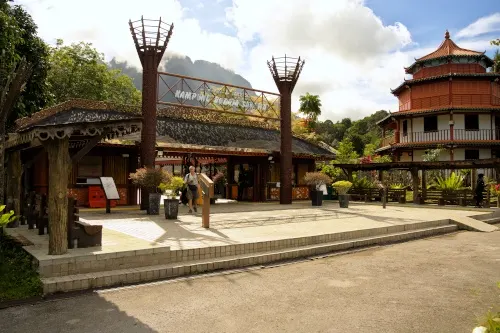
Sarawak Cultural Village (Kampung Budaya Sarawak) is a museum that showcases the culture and lifestyles of Sarawak's ethnic groups. It spans 17 acres and is about half an hour's drive from Kuching City. It is within walking distance from the Damai Beach Resort.
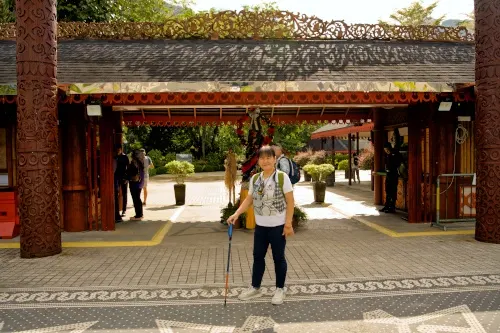
The village's main attraction is the replica buildings of all the main ethnic groups, showcasing Sarawak's diverse culture. It is managed by a government agency, the Sarawak Economic Development Corporation (SEDC).
These replica houses are constructed using authentic architecture and feature utensils used by various ethnic groups, providing a glimpse into their traditional lifestyles and dwellings.
We took a round trip to visit all the houses, which began at the Chinese farmhouse and ended at the performance theatre.
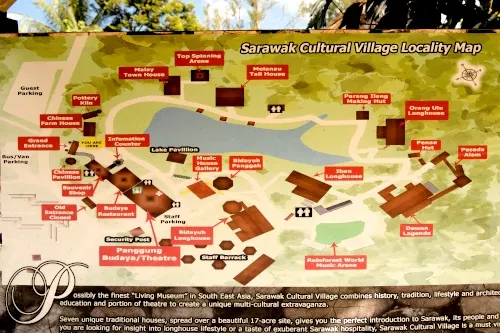
Chinese farmhouse
Unfortunately, during our visit, the Chinese farmhouse was under renovation.
However, according to the official website, the Chinese farmhouse is built at ground level, unlike other local dwellings. The doorpost is protected with strips of red paper with inscribed protection verses. The house has a earth floor, whitewashed sawn timber walls, and a thatched leaf attap roof.
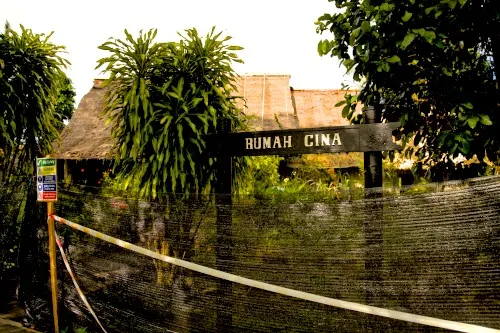
It is divided into two main parts: the main room and the bedroom. The household shrine is one of the focal points in the main room, and the pepper garden outside the house is a must-see.
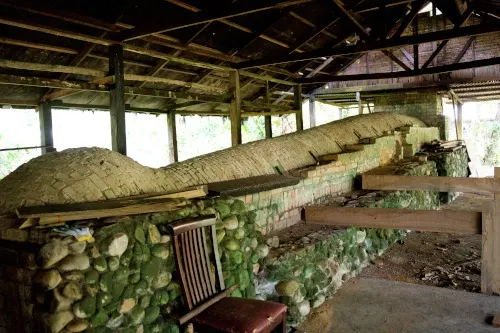
We managed to visit the Pottery Kiln situated next to the farmhouse where the Chinese used to make pottery during the old times.
Malay House
The Malay house is next to the Chinese farmhouse. It is made of wood and is designed to suit the tropical climate. It stands on stilts, and we had to climb a staircase.

The front room is designated for men, official events, and entertaining guests. The windows are cut down to the floor level, which allows the breeze to flow in for the seated people.
The decorative elements on the stair and window railings, fascia boards under the eaves, and ventilation grills beside or above doorways showcase exceptional artistic skill.
During our visit, we saw a Japanese tourist playing Congkak, a traditional Malay board game, with a woman wearing traditional Malay clothing.


Melanau House
Next to the Malay House is the Malanau House. The Melanau people traditionally lived near the sea and needed protection from pirates, so they built tall houses high above the ground.


To reach the first floor of the Melanau Tall House, one would need to climb the first staircase, where they keep tools and utensils used by the Melanaus. The second staircase leads to the bedroom models.
Orang Ulu Longhouse
The next house is the Orang Ulu Longhouse. It is a stunning example of traditional architecture, perched high above the lush greenery of the tropical forest.
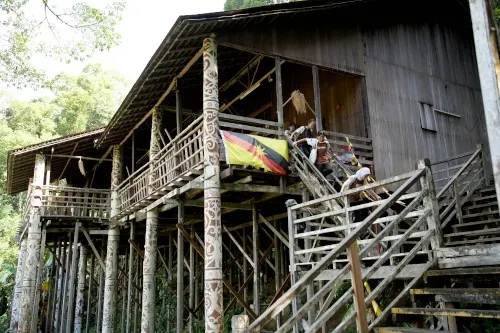

Besides that, there's another small hut to showcase how to make the traditional sword (Parang)

The traditional people staying in the long house also perform a traditional dance for us.

Penan House
Next, we arrived at the Penan House. The Penan people are known for constructing temporary shelters for weeks or months. Their shelters are typically positioned near a group of wild sago trees, which are the primary source of their food. Once the trees have been depleted, the family moves on.

The Penans are highly skilled in the creation and use of blowpipes. There is a place for visitors to try blowpipe shooting. We did not participate as we had tried in a Penan settlement we visited during our last trip to Mulu.
Iban Longhouse
After the Penan House, we arrive at the Iban Longhouse.

We have to climb up a notched log that serves as a staircase to reach an open verandah.
The Iban traditional longhouse is made of timber tied with creeper fiber, with a roof that is thatched with leaves.


Bidayuh House
The final traditional house that we visited was the Bidayuh House.
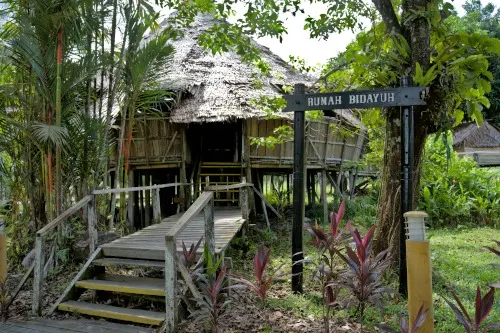
It is a round head-house filled with bamboo and intricate carvings known as the Barok. This unique space serves as the gathering spot for the Bidayuh warriors and is decorated with gongs, war drums, weapons, and wooden masks.
The Barok is connected to the longhouses where the Bidayuh people live.

The cultural performance
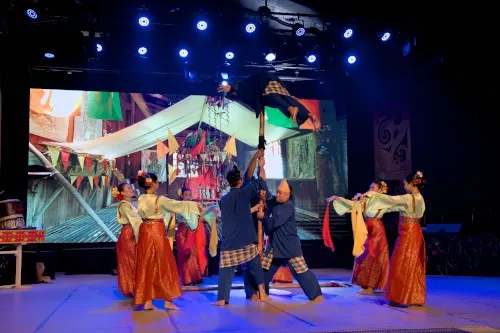
After we visited all the model houses of different tribes, we then proceeded to the village’s theatre to enjoy the cultural performances by various ethnic groups. They all have diverse cultures reflected in their dances and songs.

The dancers are wearing their traditional costumes. I am not a fan of any cultural show, but I have seen some of the best choreography of multicultural dance performances today. It was very entertaining.
More information about Kuching
We had an amazing time exploring different places during our trip to Kuching. We wrote a few articles about our adventures. Check them out!
- Things to do in Kuching, Sarawak (10 attractions outside the city)
- Top 12 places to visit in Kuching (attractions within the city)
- The top 12 best places to eat in Kuching, Sarawak
Basic information about Sarawak Cultural Village

- The entrance fees for the Sarawak Cultural Village are RM95 for adults and RM60 for children. (Walk-in) - cheaper to buy online. Also, the fee is higher for 1-day admission with lunch.
- They have two cultural dance shows for a day. The first show starts at 11:30 AM and the second at 4 PM.
- The opening hours are from 9:00 AM until 4:00 PM.
- The Sarawak Cultural Village is also where the annual Rainforest World Music Festival is performed.
- The Sarawak Cultural Village is one of the most acclaimed living museums in the world, having been honored with ten significant awards. Among them are the PATA Gold Cultural Award, the ASEANTA Classic Award, the ASEANTA Best Cultural Preservation Effort Award, the Tourism Malaysia Award, the MTV Grand Prix Award, and the Hornbill Tourism Gold Award.
